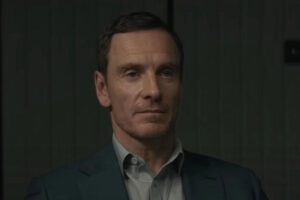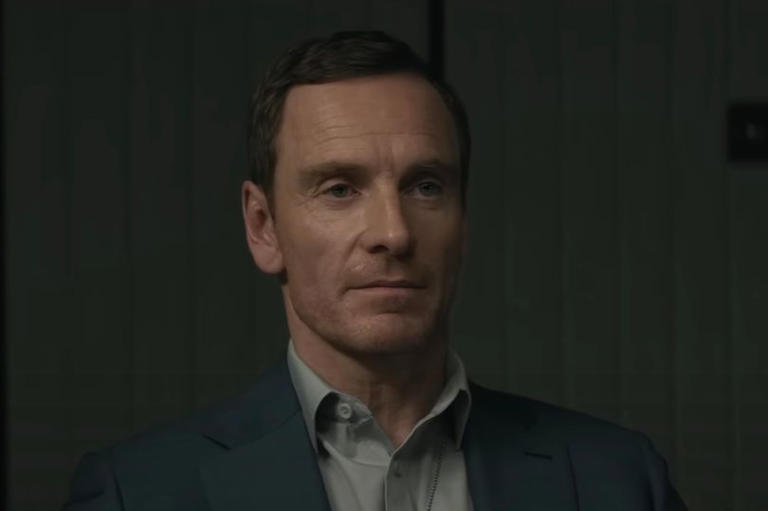What is Michael Fassbender’s method of acting?
Exploring the Intensity, Precision, and Process Behind the Acclaimed Actor’s Craft
(By Carmichael Phillip)

An Actor of Depth and Commitment
Michael Fassbender has long been regarded as one of the most captivating actors of his generation. From his mesmerizing turn in Hunger (2008) to his iconic portrayal of Magneto in the X-Men franchise, Fassbender is known for delivering performances of extraordinary intensity and realism. His acting method is not confined to one rigid school of thought, such as Method acting or Classical training—instead, it’s a hybrid of techniques that prioritize emotional truth, physical commitment, and an intense connection to the character’s psychology.
In interviews, Fassbender has often spoken about his approach to acting, revealing a process that’s instinctive but also highly disciplined. “I like to be prepared,” he once said in a conversation with The Guardian. “But I don’t like to over-prepare to the point where I’ve set something in stone. I want to leave space for surprise.”
Physical Transformation and Embodiment
One of the hallmarks of Michael Fassbender’s acting is his willingness to undergo profound physical transformations for his roles. His performance in Hunger, where he played Irish hunger striker Bobby Sands, is perhaps the most powerful example. Fassbender lost more than 30 pounds for the role, embodying the toll of starvation with harrowing authenticity.
“When you’re in that kind of state, you’re not acting hunger—you are hungry,” Fassbender told Time Out London. “That takes away a layer. It gives you something real to hold on to.”
This dedication to the physical aspects of a character doesn’t just involve weight changes. In Shame (2011), where he portrayed a sex addict, his physicality—his posture, gestures, and even eye movement—was as telling as any line of dialogue. Fassbender believes in living inside the character’s body, allowing the physical form to influence the emotional one.
Emotional Truth Over Performance
Fassbender does not chase awards or theatricality—his priority is emotional truth. He often speaks of “getting out of his own way” when acting, letting the character’s emotions take over without intellectual interference. This approach is especially evident in his work in Steve Jobs (2015), where he brought subtle layers of arrogance, vulnerability, and complexity to the titular role.
“What I’m trying to do is understand the truth of the character—who they are, why they behave the way they do—and then just allow that to live in me while the camera’s rolling,” Fassbender said in an interview with IndieWire. “I don’t want to show the audience something. I want them to feel it through me.”
His ability to internalize emotional states often results in performances that feel unsettlingly real. He creates characters who are never caricatures, even when they’re deeply flawed or monstrous.
Blending Method and Meisner Techniques
While Fassbender doesn’t formally identify with any one acting school, his method draws from several. Elements of Stanislavski, Method acting, and the Meisner technique can all be found in his approach. He does the psychological homework of a Method actor—crafting detailed backstories and motivations—while also embracing Meisner’s philosophy of reacting truthfully in the moment.
In an interview with The Hollywood Reporter, Fassbender explained: “I like to build the architecture of a character—who they are, what they want, what their past is—but then I throw it all away once I’m in the scene. I want to be able to listen, to react, to be surprised.”
This blending of approaches helps him stay grounded in a scene while also being spontaneous. It explains why his performances never feel forced or rehearsed, but rather lived-in and immediate.
Collaboration with Directors
Another crucial part of Fassbender’s method is his deep respect for collaboration, especially with directors. His partnerships with Steve McQueen (Hunger, Shame, 12 Years a Slave) and Justin Kurzel (Macbeth, Assassin’s Creed) are evidence of a shared language built on trust and artistic ambition.
“Working with Steve [McQueen] changed everything for me,” Fassbender told Empire Magazine. “He pushed me to places I didn’t know I could go, and he never let me off the hook.”
Fassbender values directors who challenge him, who demand more, and who understand that the performance is a mutual effort. His openness to feedback and direction allows for deeper and more complex portrayals.
Research and Real-World Immersion
Research plays a significant role in Fassbender’s preparation. When playing real-life characters like Bobby Sands or Steve Jobs, he immerses himself in biographies, documentaries, and interviews. But he’s careful not to imitate.
“I didn’t want to mimic Jobs,” Fassbender told Variety. “I wanted to understand what drove him, what scared him, what made him tick—and then find my own way of expressing that.”
In 12 Years a Slave, his role as Edwin Epps—a brutal plantation owner—required Fassbender to confront dark elements of humanity. He reportedly avoided judging the character, choosing instead to understand him within the context of his time and power structures.
Maintaining Distance and Emotional Control
Unlike some actors who fully immerse themselves and never break character during filming, Fassbender is known for maintaining a healthy emotional distance between takes. “I don’t take the character home with me,” he said in an interview with GQ. “When the day’s done, I’m done. I don’t think it’s necessary to torture yourself.”
This balance allows Fassbender to go to emotionally intense places without burning out. His process is about control—being able to summon deep emotions on cue but also knowing how to shut them off when they’re no longer needed.
Improvisation and Creative Freedom
Fassbender enjoys improvisation, particularly when the scene allows for it. He has said that improvisation is often where some of the best acting happens, because it’s entirely reactive and raw.
In Shame, many of the most powerful scenes emerged from unplanned moments between Fassbender and co-star Carey Mulligan. “Sometimes Steve would just let the camera roll and not say anything,” Fassbender recalled. “That freedom meant we had to really be present.”
Improvisation helps him stay flexible and engaged, creating performances that breathe and evolve with each take.
Exploring Flawed and Difficult Characters
Fassbender gravitates toward complex, often morally ambiguous characters. Whether he’s playing a slave owner, an addict, or a troubled mutant, his goal is not to justify the character’s actions but to understand them.
“I’m not interested in playing heroes or villains,” he told The Irish Times. “I’m interested in people who are conflicted. That’s where the truth lies—in the messiness.”
His portrayal of these characters is never didactic. He leaves it to the audience to draw conclusions, refusing to guide their judgment with sentimentality or artifice.
Conclusion: Craft Over Celebrity
Michael Fassbender’s acting method is a testament to the value of craft over celebrity. He is not known for indulging in the public spectacle of fame; rather, he devotes himself to the integrity of his work. His method combines intense physical and emotional preparation, a deep respect for collaboration, and a profound understanding of character psychology.
“Acting, for me, is about honesty,” Fassbender has said. “If I can get to that place where I stop thinking and just live in the moment—that’s when I know it’s working.”
In a world increasingly saturated by spectacle, Fassbender’s work reminds us that true artistry lies in restraint, in depth, and in the fearless pursuit of emotional truth.
If you’re interested in acting technique, performance psychology, or the anatomy of film craft, Michael Fassbender offers a powerful case study. His method is not flashy, nor is it formulaic. It is, quite simply, the work of an artist committed to the truth of every role he plays.




